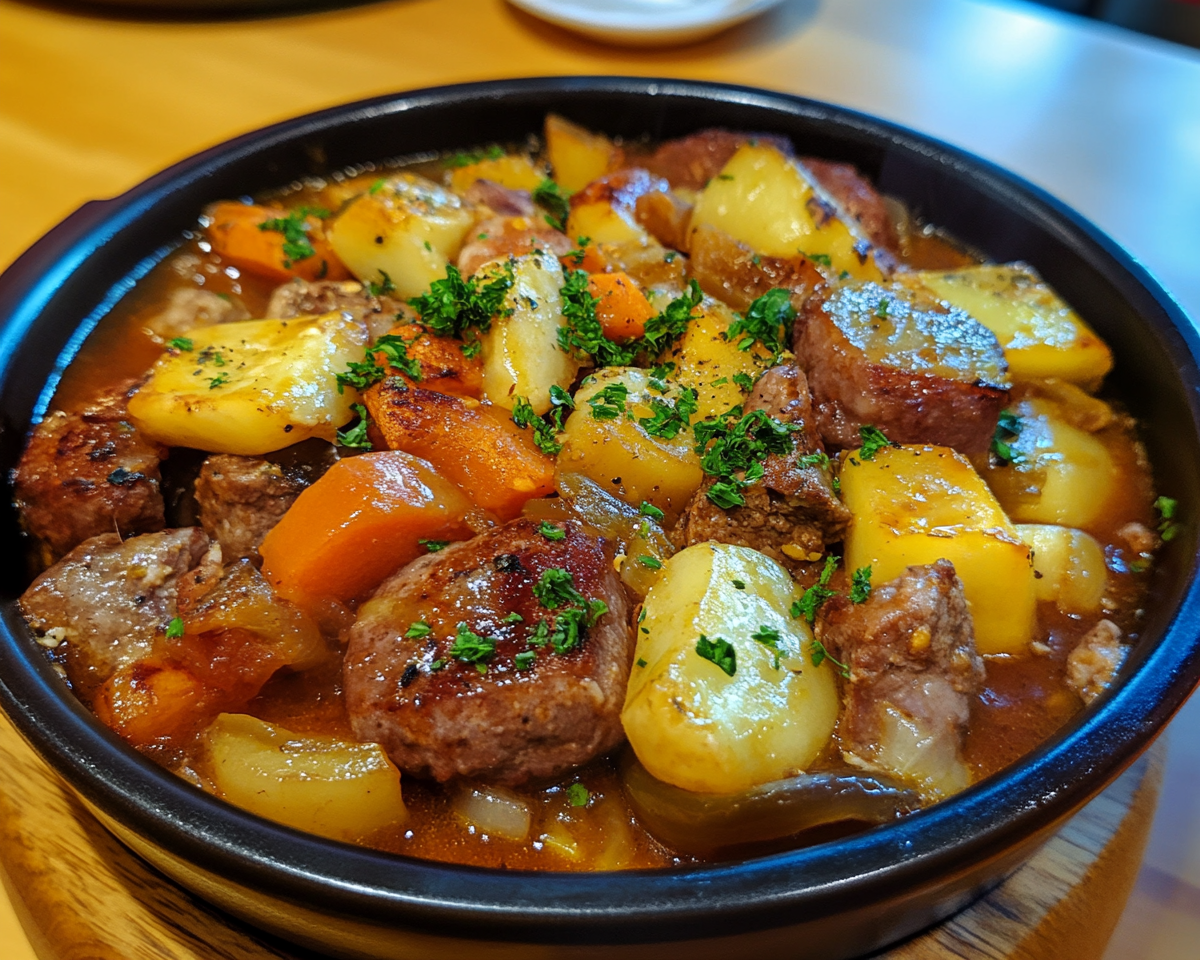German Casserole: A Timeless Comfort Food
Introduction
When it comes to hearty, flavorful, and satisfying dishes, German casseroles are a perfect choice. These versatile dishes, known for their layers of rich ingredients and robust flavors, embody the essence of comfort food. Whether made with noodles, potatoes, or spaetzle, German casseroles are a family-friendly option that can be easily customized to suit any palate.
For those who enjoy exploring comfort food, consider Rediscovering the Joy of Simple Meals: Kielbasa, Potatoes, and Green Beans for another heartwarming recipe.
Why Choose a German Casserole?
Perfect for Any Occasion
German casseroles are ideal for gatherings, weeknight dinners, or meal prepping. Their rich flavors and flexibility make them suitable for a range of occasions, from casual family meals to festive celebrations.
A Balance of Flavors and Textures
The beauty of a German casserole lies in its layers—creamy sauces, tender noodles or potatoes, savory meats or vegetables, and a golden, crispy topping.
To master the techniques for creating the perfect casserole, check out Mastering the Art of Creamy Béchamel Sauce, a vital skill for making authentic German dishes.
Ingredients for the Perfect German Casserole
Core Ingredients:
- Base: Spaetzle, egg noodles, potatoes, or rice.
- Protein: Ham, sausage, ground beef, or a vegetarian alternative like mushrooms.
- Vegetables: Caramelized onions, green beans, or spinach.
- Sauces: Creamy béchamel, sour cream mixtures, or tomato-based sauces.
- Toppings: Gruyère cheese, breadcrumbs, or crispy fried onions.
Optional Additions:
- Herbs and Spices: Nutmeg, parsley, thyme.
- Flavor Enhancers: Mustard, Worcestershire sauce, or paprika.
- Custom Touches: Sauerkraut for a tangy twist or chestnuts for a festive touch.
Step-by-Step Instructions
1. Preparing the Base
- Cook spaetzle or noodles until al dente, or parboil sliced potatoes.
- Lightly season the base with salt and pepper.
2. Preparing the Sauce
- Béchamel Sauce:
- Melt 3 tbsp butter in a pan.
- Whisk in 3 tbsp flour and cook until golden.
- Gradually add 2 cups milk, whisking to avoid lumps.
- Season with nutmeg, salt, and pepper.
- Alternative Sauces:
- Use a sour cream and cheese mixture for tangy richness.
- A tomato-based sauce for a lighter, more vibrant flavor.
3. Preparing the Protein and Vegetables
- Brown ground beef or sauté mushrooms in olive oil.
- Add caramelized onions or blanched green beans for a boost of texture.
4. Assembling the Casserole
- Layer the base, protein, and vegetables in a greased baking dish.
- Pour the sauce evenly over the layers.
- Sprinkle grated cheese and breadcrumbs on top.
5. Baking
- Preheat the oven to 375°F (190°C).
- Bake for 25-30 minutes until the top is golden and bubbling.
Variations and Regional Takes
Swabian Noodle Casserole
- Features spaetzle, ham, and a creamy cheese sauce.
- Often topped with crispy fried onions.
Potato-Based German Casserole
- Thinly sliced potatoes layered with cream, cheese, and bacon.
- A perfect choice for hearty winter meals.
Vegetarian and Vegan Versions
- Replace meat with mushrooms or lentils.
- Use plant-based milk and cheese for a vegan-friendly option.
Festive Variations
- Add sauerkraut or chestnuts for a unique holiday touch.
- Incorporate diced apples or cranberries for a sweet-savory twist.
FAQs
1. What Makes German Casseroles Unique?
German casseroles often include a creamy béchamel sauce and emphasize hearty, rustic ingredients like spaetzle and potatoes.
2. Can I Make a German Casserole Ahead of Time?
Yes, you can assemble the casserole and refrigerate it overnight. Add the toppings just before baking.
3. Are German Casseroles Gluten-Free?
By substituting noodles or flour with gluten-free options, you can easily adapt the recipe.
4. What’s the Best Cheese for a German Casserole?
Gruyère, Emmental, or Parmesan are excellent choices for their rich, melty texture.
5. Can I Freeze Leftovers?
Freeze portions in airtight containers for up to 3 months. Reheat in the oven to restore crispness.
Serving Suggestions
- Pair with a fresh salad or crusty bread for a complete meal.
- Serve alongside traditional German dishes like schnitzel or bratwurst for a themed dinner.
Internal Linking Opportunities
- Use Rediscovering the Joy of Simple Meals: Kielbasa, Potatoes, and Green Beans for complementary side dishes.
- Link to Slow Cooker Magic: Unveiling the Ease of Crock Pot Baked Ziti for another hearty, baked recipe.
- Include Creamy Garlic Parmesan Chicken for a protein-packed pairing.
Conclusion
A German casserole is more than a dish; it’s a culinary experience that brings warmth and comfort to any table. With its layers of creamy sauces, tender bases, and crispy toppings, it’s a recipe that can be customized for any taste or occasion. Whether you stick to traditional flavors or experiment with creative variations, this dish is sure to become a family favorite.

